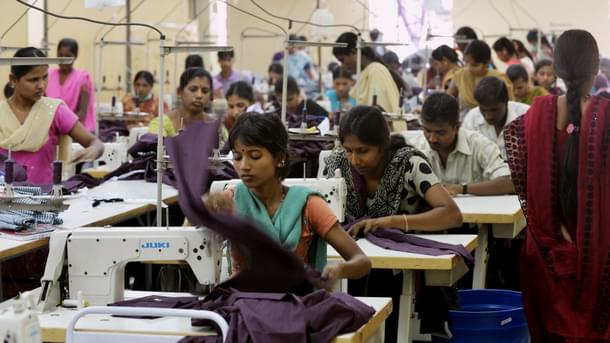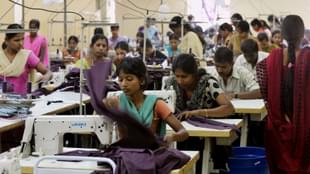Insta
How Government Package Of Rs 6,000 Crore To Apparel Sector Boosted Ready Made Garment Exports
Swarajya Staff
Jan 29, 2018, 03:24 PM | Updated 03:24 PM IST
Save & read from anywhere!
Bookmark stories for easy access on any device or the Swarajya app.


The Economic Survey report 2017-18 has established that the implementation of Rs 6,000 crore package, announced for the apparel sector on June 2016, has provided an impetus to the exports of ready made garments (RMG) of man-made fibres.
The survey, which was tabled today (29 January) in both houses of the Parliament by Finance Minister Arun Jaitley ahead of the Union budget, provides details on the impact of the measure.
The apparel sector has immense potential to drive economic growth, increased employment, and empower women in India. The potential of the sector has increase recently with China’s share of global apparel exports coming down in recent years. However, India has not, or not yet, capitalised on this opening resulting in countries like Vietnam and Bangladesh quickly filling the vacuum left by China.
In order to get back in the game, the Cabinet in June 2016 announced a Rs 6,000 crore package for the apparel sector, says the survey. The largest component of this package were rebates on state levies (ROSL) to offset indirect taxes levied by the states (then Value Added Tax or VAT) that were embedded in exports. This ROSL was over and above the duty drawbacks and other incentives (like the Merchandise Exports from India Scheme (MEIS) that were given to offset indirect taxes embedded in exports. Prior to the introduction of the package, duty-drawbacks were between 7.5 per cent and 9.8 per cent for apparels. Post its introduction, the ROSL increased export incentives by between 2.8 per cent and 3.9 per cent.
A key question is: did the package succeed? To answer this, the survey uses a well-recognised difference-in-difference (DD) approach, which allows it to isolate, albeit imperfectly, the impact of the package. Essentially, the approach asks whether the gap between clothing and comparator group export growth increased after the package was introduced.
Three main findings emerge:
The package increased exports of readymade garments (RMG) made of man-made fibres (MMFs)
The package did not have a statistically positive impact on RMG made of other fibre (silk, cotton, etc); and
The impact on MMF-RMGs increased gradually over time; by September 2017, the cumulative impact was about 16 per cent over other comparator groups.
The figure below shows the growth in clothing exports compared to other labor-intensive and manufacturing goods, which did not receive ROSL. The positive impact on RMGs made of MMF after the introduction of the package shows a sharp increase.
.png?w=610&q=75&compress=true&format=auto)
A policy implication is that the Goods and Services Tax (GST) Council should conduct a comprehensive review of embedded taxes arising from products left outside the GST (petroleum and electricity) and those that arise from the GST itself (for example, input tax credits that get blocked because of “tax inversion”, whereby taxes further back in the chain are greater than those up the chain). This review should lead to an expeditious elimination of these embedded export taxes, which could provide an important boost to India’s manufacturing exports.
Former NITI Aayog vice chairman Arvind Pangariya recently highlighted the huge job creation potential in the labour intensive apparel sector through a comparison between Reliance Industries and Shahi Exports: “The RIL reports $110 billion in assets and 250,000 employees across its various ventures. Therefore, it employs five workers for each $2.2 million in assets. Shahi Exports, which is India's largest apparel exporter, has assets worth $185 million and employs 106,000 workers in its apparel factories. Therefore, it employs 1,260 workers for every $2.2 million in assets. For the same investment, Shahi Exports creates 252 times the jobs that RIL does.





